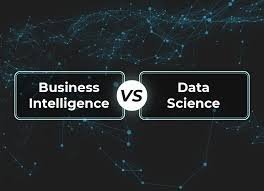In today’s data-driven world, businesses rely heavily on data to make informed decisions, improve efficiency, and gain a competitive advantage. However, terms like Data Engineering, Data Science, and Business Intelligence (BI) are often used interchangeably, even though they serve distinct purposes. For organizations exploring Data Integration Engineering Services or broader Data Engineering Services, it’s essential to understand the difference between these three domains and how they work together.
What is Data Engineering?
Data Engineering is the foundation of the modern data ecosystem. It focuses on the collection, storage, and transformation of raw data into structured and usable formats. Without strong data pipelines, neither Data Science nor Business Intelligence can function effectively.
Key responsibilities of Data Engineers include:
- Building and maintaining data pipelines.
- Designing data warehouses and data lakes.
- Ensuring data quality, scalability, and security.
- Managing real-time and batch data processing.
For example, an e-commerce company may collect data from multiple sources like websites, mobile apps, and payment systems. Data Engineers use Data Integration Engineering Services to unify this information into a centralized warehouse. This ensures analysts and data scientists work with accurate, up-to-date, and consistent datasets.
What is Data Science?
Data Science goes beyond storing and integrating data—it’s about extracting insights and predicting outcomes. Data Scientists use advanced statistical models, machine learning algorithms, and AI techniques to analyze data and solve complex business problems.
Key responsibilities of Data Scientists include:
- Developing predictive models.
- Performing statistical analysis.
- Training machine learning algorithms.
- Creating data-driven solutions for real-world problems.
For instance, in the same e-commerce company, Data Scientists might use historical customer data to predict buying behavior, recommend products, or detect fraudulent transactions. These insights enable businesses to personalize customer experiences and optimize revenue strategies.
What is Business Intelligence (BI)?
Business Intelligence focuses on reporting and visualization. While Data Science is predictive, BI is descriptive—it helps decision-makers understand what has already happened and why.
Key responsibilities of Business Intelligence professionals include:
- Designing dashboards and reports.
- Performing data visualization for clarity.
- Identifying key performance indicators (KPIs).
- Supporting business users with actionable insights.
In the e-commerce scenario, BI teams might create dashboards showing sales trends, customer acquisition costs, or revenue by region. Unlike Data Scientists, BI professionals focus on making data accessible to executives and managers in an easy-to-understand way.
Comparing Data Engineering, Data Science, and Business Intelligence
To better understand how these domains differ, let’s compare them on several aspects:
| Aspect | Data Engineering | Data Science | Business Intelligence |
| Focus | Building pipelines and data infrastructure | Predictive analytics and modeling | Reporting and visualization |
| Data Type | Raw and structured data | Historical + predictive data | Historical and descriptive data |
| Tools | Hadoop, Spark, SQL, ETL tools | Python, R, TensorFlow, ML libraries | Power BI, Tableau, Looker |
| Output | Clean, usable datasets | Predictions, AI models | Dashboards, KPI reports |
| Goal | Enable reliable data access | Extract insights and make predictions | Support decision-making with clarity |
How They Work Together
While each field has its unique focus, they are interconnected:
- Data Engineering builds the data infrastructure and ensures reliable Data Engineering Services are in place.
- Data Science leverages this structured data to build models and uncover hidden patterns.
- Business Intelligence uses both raw and modeled data to generate reports for executives and decision-makers.
In short: Data Engineering provides the data, Data Science analyzes it, and Business Intelligence visualizes it.
Why Businesses Need All Three
Relying on just one of these areas is not enough. Successful organizations integrate all three for maximum impact.
- Without Data Engineering – Businesses lack high-quality, reliable data, leading to flawed insights.
- Without Data Science – Companies miss opportunities for predictive insights and advanced analytics.
- Without Business Intelligence – Leaders cannot translate data into actionable strategies.
That’s why many enterprises invest in Data Integration Engineering Services to ensure data pipelines are strong, while also building Data Science teams and BI dashboards to cover the full spectrum of analytics.
Real-World Applications
- Healthcare
- Data Engineering: Collecting patient records from multiple systems.
- Data Science: Predicting disease risks with AI models.
- Business Intelligence: Reporting hospital performance metrics.
- Retail
- Data Engineering: Integrating sales, logistics, and customer data.
- Data Science: Forecasting demand and recommending products.
- Business Intelligence: Visualizing sales trends by location.
- Finance
- Data Engineering: Creating pipelines for transaction data.
- Data Science: Detecting fraud through anomaly detection.
- Business Intelligence: Monitoring revenue, expenses, and compliance reports.
The Role of Professional Services
For most businesses, managing these three areas internally can be overwhelming. That’s why outsourcing to experts in Data Engineering Services has become essential. A professional team ensures:
- Seamless data integration across platforms.
- Scalable and secure infrastructure.
- Support for advanced analytics and machine learning.
- Dashboards that enable quick decision-making.
When paired with Data Science and BI teams, these services create a holistic ecosystem where raw data becomes actionable intelligence.
Conclusion
Data Engineering, Data Science, and Business Intelligence may sound similar, but they serve different roles in the data ecosystem. Data Engineering builds the foundation, Data Science drives predictions and insights, and Business Intelligence ensures those insights are accessible to decision-makers.
For organizations, investing in Data Integration Engineering Services and professional Data Engineering Services ensures that their entire data strategy is reliable, scalable, and future-ready. By leveraging all three areas together, businesses can transform data into a powerful driver of growth, innovation, and competitive advantage.









